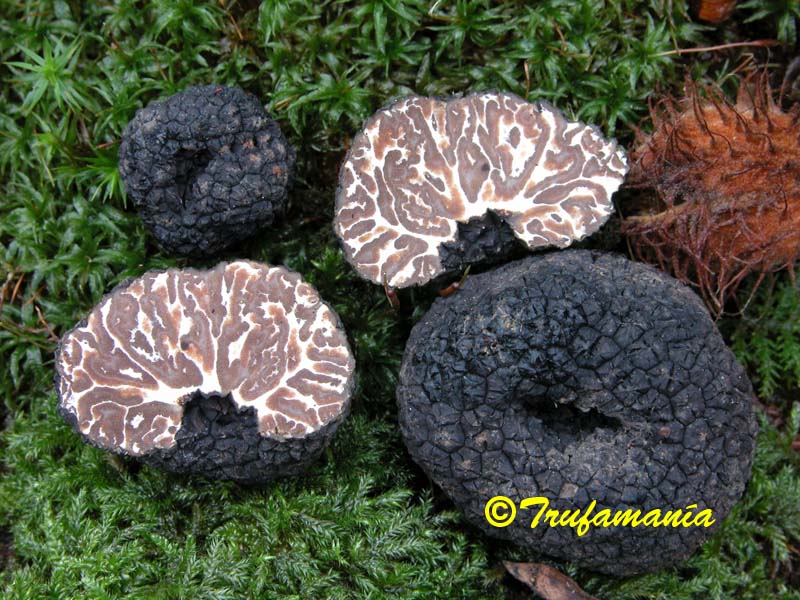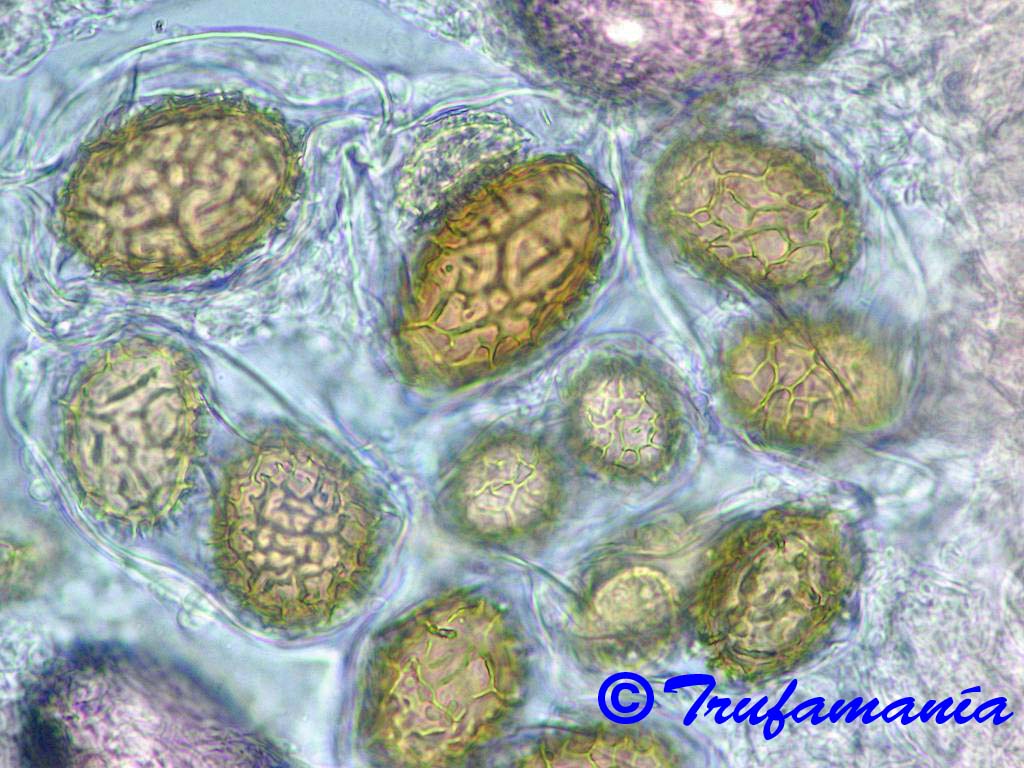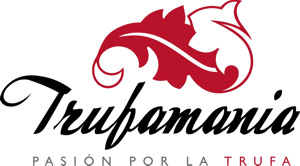TUBER MESENTERICUM Vittadini
Monographia Tuberacearum 40, Tab. III fig. XIX (1831)

(Click on the picture to see more images)
Synonyms:
Tuber cibarium Corda (1842), Icones fungorum 5:68, t. 5 f. 46
Tuber bituminatum Berkeley et Broome(1851), Ann. & Mag. Nat. Hist., Ser. II 7: 183
Tuber culinare Zobel var. mesentericum (Vittadini) Zobel (1854), in (Corda) Zobel Iconum fungorum 6: 82
Tuber culinare Zobel var. tesserulatum Zobel (1854), in (Corda) Zobel Iconum fungorum 6: 83
Tuber culinare Zobel var. tulasneanum Zobel (1854), in (Corda) Zobel Iconum fungorum 6: 83
Tuber culinare Zobel var. lespiaultianum Zobel (1854), in (Corda) Zobel Iconum fungorum 6: 83
Tuber culinare Zobel var. rabenhorstii Corda (1854), in (Corda) Zobel Iconum fungorum 6: 83, t. 18 f. 13
Tuber mutabile Quélet (1881), C. R. Ass. franç. Av. Sc. (Reims, 1880) 9: 671, t. 8 f. 14
Tuber bituminatum Berkeley et Broome var. ellipsosporum Ferry de la Bellone (1888), La Truffe 144
Tuber maresa Font Quer (1930), in Codina & Font Quer Cavanillesia 3: 179 (1930)
Tuber aestivum Vittadini var. mesentericum (Vittadini) Trappe (1979), Mycotaxon 9(1): 311, t. 3 f. 29c
Macroscopic characters:
Ascomata: hypogeous, subglobose or irregular in form, with a basal cavity, 2-3 (6) cm in size, blackish-brown to black, conspicuously warted. Warts 2-8 mm across, usually smaller than those observed in Tuber aestivum, pyramidal, 4-6-sided, sometimes flattened.
Gleba: firm, solid, dark brown at maturity, darker than Tuber aestivum gleba, marbled with white, meandering veins that do not change colour when exposed to the air. Veins often arise from the basal cavity and are radially arranged.
Odour: strong, distinctive, phenolic, bitumen-like or iodine, but varies greatly from one collection to other. This odor weakens when exposed to air becoming sometimes pleasant, like Tuber melanosporum odour.
Taste: strong, becoming sometimes unpleasant for some people, a little bitter, and sometimes reminiscent of bitter almonds
Habitat:
Distribution poorly known due to confusion with Tuber aestivum and Tuber uncinatum. Tuber mesentericum are associated with the roots of several trees: oaks (Quercus), beeches (Fagus sylvatica), hazels (Corylus), pines (Pinus). These truffles inhibit plants growing and make “burns”. They ripen from September to January. We find them in shady forest of holm oaks, pines and beeches.
Notes:
Tuber mesentericum is very similar to Tuber aestivum and has been synonymized or considered a Tuber aestivum variety, but Molecular analysis showed that they are two different species. The presence of a basal cavity and the phenolic odour make it different from Tuber aestivum, but not from Tuber uncinatum that sometimes has a basal cavity and a similar odour. Tuber mesentericum is not much appreciated because their strong and unpleasant odour

(Click on the picture to see more images)
Microscopic characters:
Asci: globose to subglobose, sessile or short-stalked, 70-100 x 45-75 µm, 1-5 (-6)-spored (usually 3-4-spored).
Ascospores: 25-52 (-57) x 19-37 µm excluding ornament, size variable depending on number of spores in the ascus, Q range = 1,40-1,83, ellipsoid to subglobose, yellow, translucent, ornamented with a coarse irregular reticulum, 3-5 µm high, sometimes bending at the top. Meshes variable, usually 3-5 across width of spore and often with incomplete secondary crests inside
Peridium: pseudoparenchymatous.
| Antonio Rodríguez trufamania@gmail.com antonio@trufamania.com |



